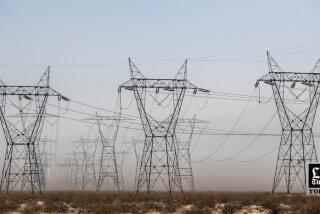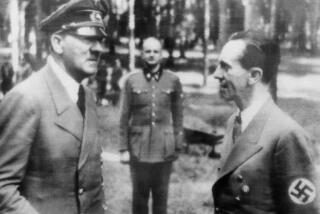A True-Life Story: Why Science Writers Lie
- Share via
“You always have to lie a little to tell the truth.” A first-rate popularizer of science, MIT physicist Victor Weisskopf, once told me that was the secret to explaining science in nontechnical terms. He should know. His enchanting book “Knowledge and Wonder” has been seducing laypeople into the world of science for decades.
And so I confess: Week after week, I tell what I hope are well-considered lies. I write about electric currents that “flow” through wires like rivers--even though I know they do no such thing. I talk about elementary “particles” and “forces” even though physicists have only the foggiest notion what those terms mean. I toss off words such as “time” and “gravity,” knowing that to some extent, their very existence is illusionary.
The lies are simplifications that ease the way to the central point. The art is knowing the difference between acceptable--even necessary--lies and oversimplifications that slide into mistakes. Sometimes, it’s hard to tell which is which, and even scientists frequently don’t agree.
I vividly remember the first deliberate lie I told in a science essay. I was writing in Time Inc.’s Discover magazine about the ways seemingly small differences can sometimes produce enormous effects.
The elements neon and sodium, for example, have starkly contrasting characters. Neon is what chemists call a noble gas. It is so self-contained and standoffish that it won’t react with anything. Sodium, on the other hand, is a highly reactive metal.
And yet, the only difference between the two, I wrote, is one lousy extra electron in sodium’s outer shell. Neon has 10 electrons to sodium’s 11.
To be honest, I stole the example from Weisskopf (who also told me that the only sin is if you hear a good idea and you don’t steal it). And strictly speaking, it is wrong. There’s something else different about neon and sodium: Sodium also has an extra proton in its nucleus. However, atomic nuclei don’t affect an element’s chemical character. And as the mathematicians like to say, a difference is a difference only if it makes a difference.
Was pushing that proton under the rug an acceptable lie? Or a misleading representation?
Recently, I wrote a column about water that contained both an acceptable lie and a misleading misrepresentation--and received a dozen letters from chemistry teachers in response.
In describing the marvelous and mysterious chemical properties of water, I said it was the only substance that can exist in solid, liquid and gaseous states at the same temperature. That sentence should have read: Water is the only substance that is solid, liquid and gas at temperatures and pressures normal on the surface of the Earth.
Actually, all substances have a so-called triple point, some combination of pressure and temperature at which they can exist in all three states at once. But it would take extreme temperatures and/or pressures to reach most triple points.
Because the essay’s focus was water’s relevance to life, I omitted the second half of the thought. In retrospect, that was a misleading misrepresentation.
The lie (or one of the lies) was the statement that water is the only substance that expands when it freezes into a solid. Actually, the metal alloy used to set type also expands. That embellishment seemed to distract from the central point, however, so I chose to leave it (like sodium’s proton) out. In a case like this, less seemed more. There’s a limit to the number of qualifications you can pile on a point without burying its impact.
Honest descriptions of scientific ideas will always remain elusive, mainly because an accurate depiction lies somewhere between the crisp clarity of equations and the fuzzy familiarity of metaphor. Even equations, when you get right down to it, don’t describe the “whole” truth very well, because truth has many facets. Only a limited slice of reality can be accurately described by any given set of natural laws.
Or as the founder of quantum mechanics, Niels Bohr, reportedly put it: “There is an uncertainty relationship between truth and clarity.” In physics jargon, that means the closer you get to pinning down truth, the more elusive clarity becomes, and vice versa.
At times, being clear and telling the whole truth may be mutually exclusive.






